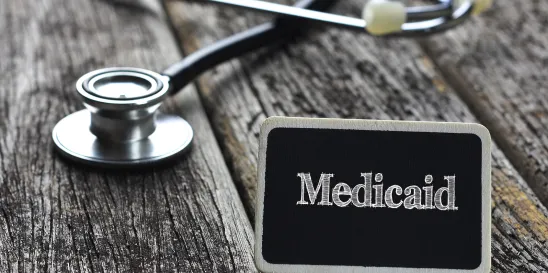On Tuesday, January 16, 2024, Governor Kathy Hochul released the SFY 2025 New York State Executive Budget (“Executive Budget”). While still subject to legislative approval, the Executive Budget incorporates the recently approved amendment (“Waiver Amendment”) to New York’s Medicaid Section 1115 Demonstration that includes $7.5 billion in Medicaid investments over the next three years. The Waiver Amendment was approved on January 9, 2024, by the Centers for Medicare & Medicaid Services (“CMS”) under Section 1115(a) of the Social Security Act and will expire on March 31, 2027. The Waiver Amendment prioritizes health-related social needs (“HRSN”) by improving health equity, increasing access to primary and behavioral health care services, and reducing health disparities.
The Waiver Amendment focuses on three strategies: investment in current and new Medicaid initiatives, implementation of a Medicaid Hospital Global Budget Initiative (“MHGBI”) and amelioration of health care workforce shortages.
New Medicaid Initiatives: Social Care Networks and Health Equity Regional Organization
The Waiver Amendment authorizes New York to invest in a wide range of Medicaid initiatives that directly address HRSN. Services will be delivered via a two-tiered system. All Medicaid beneficiaries will receive Level I services, which will involve assessment, case management and referral of members to existing state, federal and local programs that are separate from the new HRSN enhanced services. Level II services include assessments and case management plus HRSN services and are targeted to 11 criteria-specific populations enrolled in Medicaid managed care organizations (“MMCOs”). Such populations include Medicaid high utilizers, those enrolled in New York State Health Homes, individuals diagnosed with substance use disorder (“SUD”), and children under the age of six, among others. Level II HRSN services (a/k/a “Enhanced Services”) include nutrition, housing, and transportation support.
Level I HRSN services are paid for outside of the Waiver Amendment via fee for service or managed care. Level II HRSN services are paid for primarily through managed care, on a non-risk basis, through April 1, 2027, meaning that MMCOs will not be financially responsible if the costs for HRSN services exceed premiums. Instead, such costs will be covered by the state. The goal is for these Enhanced Services to be a covered benefit included in the MMCO premium starting in State Fiscal Year 2028.
Notably, the Waiver Amendment provides the infrastructure authority to create Social Care Networks (“SCNs”) in nine regions through New York State (up to $500 million) and authorizes over $3 billion for increased coverage of HRSN Enhanced Services. A request for applications (“RFA”) for SCNs was released and applications are due March 27, 2024. SCNs will be required to enroll in Medicaid (eMedNY) as a Social Care Network Medicaid Provider with the primary purposes of 1) integrating health, behavioral and social care services through a network of Community Based Organizations (“CBOs”) for high-need Medicaid recipients, and 2) facilitating access to critical nutritional, housing support and transportation services. Each SCN will capture and share data securely among and between the SCNs, CBOs, MMCOs and the Department of Health (“DOH”) to allow for effective coordination of HRSN services and evaluation of SCN’s impact on health outcomes. The RFA suggests that DOH intends to award up to 13 SCNs, with at least one from each region. CBOs will be reimbursed via a NYS developed regional fee schedule and the SCNs will receive a Per Member Per Month (“PMPM”) payment from the MMCOs with the opportunity for additional performance-based payments. As set forth in the RFA Application, the following identifies the regions and total funding for each:

Furthermore, CMS authorized up to $125 million to establish a Health Equity Regional Organization (“HERO”) — a contracted statewide entity designed to develop regionally focused approaches to reduce health disparities and support the delivery of HRSN services. In support of this goal, the HERO will collect, analyze and report data, conduct a regional needs assessment, convene stakeholder sessions, make recommendations to support advanced value-based arrangements and conduct program analysis.
Together, SCNs and the HERO will collaborate to advance value-based payment (“VBP”) arrangements and develop options for incorporating HRSN into VBP methodologies.
The MHGBI and Alignment with the CMS Advancing All-Payer Health Equity Approaches and Development (AHEAD) Model
The Waiver Amendment funds the implementation of a MHGBI for financially distressed safety net hospitals transitioning from volume-based reimbursement models to value-based models. CMS has authorized up to $2.2 billion ($550 million annually) for this initiative and will provide funding to some private not-for-profit hospitals that are financially distressed and serve patient populations experiencing poor health outcomes. To be eligible, hospitals must:
- Be private, not-for-profit and located in Bronx, Kings, Queens or Westchester counties;
- Serve a population with a Medicaid and uninsured payor mix of at least 45%;
- Have an average operating margin less than or equal to 0% over the previous four calendar years (2019-2022) based on audited cost reports; and
- Have received state-funded subsidies due to financial distress in State Fiscal Years 2023 and/or 2024.
As a condition of the MHGBI, the DOH and participating hospitals commit to applying to the Center for Medicare and Medicaid Innovation’s (“CMMI’s”) AHEAD model. In the event New York is not selected to participate in the AHEAD model, NY must commit, as a condition of the MHGBI, to implement a model consistent with AHEAD for its Medicaid program. The AHEAD model looks to strengthen primary care with a focus on lowering total cost of care growth, improving population health and reducing disparities in health outcomes.
The MHGBI also provides incentive payments for hospitals that complete required activities, including collecting and reporting data, meeting milestones for transitioning to alternative payment methodologies and demonstrating improvement in health care quality and equity, although such benchmarks have yet to be defined. Under the MHGBI, incentive payments are not considered direct reimbursement for expenditures or payments for services, nor are they considered patient care revenue. As a result, such incentive payments will not offset against disproportionate share hospital expenditures or other Medicaid expenditures related to the cost of patient care.
Workforce Investments
The Executive Budget leverages the Waiver Amendment to address health care workforce shortages, particularly in safety net settings. CMS has authorized up to $694 million for health care workforce recruitment and retention initiatives prioritizing dentists, psychiatrists, clinical nurse specialists and primary care providers. Specifically, the workforce investments aim to strengthen the health care workforce by:
- Developing health care career pathway training programs (“CPTs”) for front-line health and social care professionals, increasing access to culturally appropriate services.
- Creating a loan repayment program for certain health care professionals (including dentists, psychiatrists and clinical nurse specialists) who commit to working in community-based practices in underserved areas.
- Increasing Medicaid provider base rates for obstetric care, primary care and behavioral health care by a minimum of two percentage points for recipients in MMCO and fee-for-service. The rates must be at least 80% of Medicare rates. Such rate increases must be sustained for the duration of the demonstration as a condition of CMS approval, and the state may not engage in cost-shifting to cover these increases.
Other Noteworthy Items in the Waiver Amendment
The Executive Budget also stipulates that New York will submit a new 1115 waiver amendment to allow children to remain continuously enrolled in Medicaid and Child Health Plus up to age six. Importantly, this plan aims to prevent gaps in health care coverage during crucial periods in child development. The draft proposed amendment has been posted by DOH for public comment.
The Executive Budget and Waiver Amendment not only reflect New York’s interest in pursuing the AHEAD model, but also the Making Care Primary (“MCP”) model. Notably, the Waiver Amendment does not authorize funding for Medicaid Patient Centered Medical Home (“PCMH”) payments to Medicare providers under the MCP model, which was suggested during waiver negotiations. However, because primary care is a Medicaid state plan benefit, no section 1115 waiver authority is required, as the state already has the ability to direct its managed care plans to make these payments. Thus, the state may allocate funding to PCMHs via State-Directed Payments (“SDPs”). New York has indicated that it intends to pursue SDP authority for these payments and in fact, the Executive Budget proposes investing $74 million in PCMH enhancements for adults and children. This will allow New York to expand its efforts related to MCP with the aim of integrating primary care, behavioral health and CBOs to increase beneficiary access to HRSN services and reducing health disparities.
The goal by the end of this 1115(a) demonstration (March 31, 2027) is to make significant movement toward VBP strategies, multi-payor alignment (Medicare/Medicaid) and population health accountability.
Next Steps
The New York State Office of Health Insurance Programs (“OHIP”), a division of DOH, recently announced that it will conduct hearings to allow public comments regarding the state’s 1115 waiver Continuous Eligibility for Children up to Age Six amendment request, as well as New York’s Medicaid Redesign Team 1115 Waiver. In addition, OHIP just announced an educational webinar for stakeholders that will be posted to the New York 1115 Medicaid Waiver Information webpage on Monday, February 12, 2024.
As the implementation of the 1115 Waiver Amendment proceeds, we anticipate several significant developments that Proskauer will continue to track and follow. Specifically, we expect:
- DOH will post an Implementation Plan that will be submitted to CMS (sometime in April), which should include regional rates for CBOs providing Enhanced Services.
- DOH will be updating the MMCO model contract to incorporate the standard terms and conditions required by the approved 1115 Waiver Amendment.
- DOH will issue contract requirements for arrangements between SCNs and CBOs and SCNs and MMCOs, perhaps including standard clauses applicable to HRSN services.
- DOH will likely create a Uniform Assessment Tool for all Medicaid recipients for the purposes of providing assessment, case management and referral services, including Enhanced Services.
- Furthermore, we anticipate additional challenges will arise from data sharing between providers and SCNs, especially with respect to patients that do not have an existing relationship with these entities and/or a primary care provider.
Michael J. Menconi also contributed to this article.



 />i
/>i
